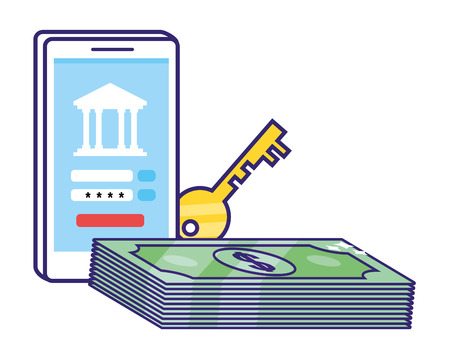Understanding High-Yield Savings Accounts
If you’re looking to build your wealth and make the most of your hard-earned money, high-yield savings accounts are an excellent tool to consider. Unlike traditional savings accounts at your local bank, high-yield savings accounts—often offered by online banks or credit unions—provide a much higher interest rate. This means your money grows faster over time with minimal effort on your part. But what exactly are high-yield savings accounts, how do they work, and why are they such a smart part of a diversified savings strategy?
Simply put, a high-yield savings account is a type of deposit account that pays significantly more interest than standard savings accounts. For example, while a typical brick-and-mortar bank might offer an annual percentage yield (APY) as low as 0.01% to 0.05%, high-yield options can easily offer APYs of 4% or higher—sometimes even more during periods when interest rates rise. These accounts function almost exactly like regular savings accounts: your funds are accessible, federally insured up to $250,000 through the FDIC or NCUA, and you can transfer money in or out as needed.
The key difference lies in where you open them and how they operate. High-yield accounts are usually available from online-only banks or financial institutions with lower overhead costs, allowing them to pass those savings on to you in the form of higher interest rates. Plus, there are no complicated investment strategies or risky market moves required—you simply deposit your money and watch it grow.
Incorporating a high-yield savings account into your overall financial plan is a smart move for anyone serious about building wealth. Not only does it help your emergency fund or short-term goals keep pace with inflation, but it also provides easy access to cash when life throws you a curveball—all while earning better returns compared to keeping your funds in a traditional savings account.
2. The Role of Savings in Building Family Wealth
Savings are the bedrock of any family’s financial well-being, especially here in the United States where life can be unpredictable and expenses often pop up out of nowhere. Building a solid savings habit is more than just putting away a little cash—it’s about creating a strong foundation for your family’s future. Whether you’re saving for your kids’ college, a new home, or simply building a safety net for emergencies, having dedicated savings is essential for peace of mind and long-term stability.
In the U.S., financial security means having enough set aside to cover unexpected costs like medical bills, car repairs, or job loss, without falling into debt. A healthy savings account also empowers you to make choices that support your family’s goals—like taking a dream vacation, funding extracurricular activities for your children, or even starting a small business someday.
Here’s a simple breakdown of how savings can help meet different family goals:
| Family Goal | Why Savings Matter |
|---|---|
| Emergency Fund | Covers 3-6 months’ living expenses if income is disrupted |
| Home Ownership | Provides down payment and helps secure better mortgage terms |
| Education Costs | Makes it easier to pay for college tuition or private schooling |
| Retirement Planning | Ensures long-term comfort and reduces reliance on Social Security alone |
| Major Purchases & Experiences | Allows you to plan for vacations, cars, or big celebrations without using credit cards |
By making savings a priority and incorporating high-yield savings accounts as part of your overall strategy, you’re not just preparing for emergencies—you’re actively working toward every milestone that matters most to your family. This approach lets you sleep better at night knowing you’ve got a cushion to fall back on and the flexibility to seize opportunities when they come along.

3. Comparing Savings Options: High-Yield vs. Other Accounts
When it comes to growing your money, not all savings accounts are created equal. Let’s break down the main types you’ll find at most American banks, so you can see how high-yield savings fit into your overall strategy.
High-Yield Savings Accounts
Think of high-yield savings accounts as the “overachievers” of the savings world. They’re usually offered by online banks and pay much higher interest rates than what you’d get at a regular brick-and-mortar bank. For example, if a standard account pays 0.01% APY, a high-yield account could offer 4.00% APY or more. That means your $5,000 could earn about $200 in a year versus just $0.50 in a traditional account—without taking on any extra risk or locking up your money.
Regular Savings Accounts
This is the classic option you might open at your neighborhood bank branch—the kind you see in those family commercials. Regular savings accounts are safe and easy to access but typically come with rock-bottom interest rates. They work well for everyday savings, like your kids’ allowance or holiday gifts, but they won’t do much to grow your wealth over time.
Certificates of Deposit (CDs)
CDs are great if you know you won’t need to touch your money for a while. You agree to lock away funds for a set period—like 6 months, 1 year, or even 5 years—in exchange for a fixed interest rate, which is often higher than a basic savings account. The tradeoff? If you take out your cash early, you’ll likely pay a penalty. CDs can be smart for long-term goals, such as saving up for college tuition or a big family trip in the future.
Money Market Accounts
A money market account is kind of like a mix between checking and savings. You usually get a debit card and limited check-writing privileges, plus slightly better interest rates than standard savings—but not always as good as high-yield accounts. These work well if you want easy access to your cash for emergencies or big expenses, but still want it to grow faster than in an ordinary savings account.
What’s Best for Your Family?
The right choice depends on your financial goals and how often you’ll need to dip into your funds. Many American families use a mix: high-yield accounts for emergency funds, CDs for long-term dreams, and money markets for flexible but higher-earning savings. By understanding these options, you can build a well-rounded strategy that fits real-life needs—helping your family’s money work smarter, not harder.
4. Maximizing Your Savings: Practical Tips
To truly build your wealth with a high-yield savings account, it’s essential to go beyond just parking your money—make every dollar work harder for you. Here are some practical, family-friendly tips to help you get the most from your high-yield savings as part of your diversified strategy:
Set Up Automatic Transfers
The easiest way to grow your savings is by paying yourself first. Set up automatic transfers from your checking account to your high-yield savings account each payday. This “set it and forget it” approach keeps your saving goals on track without requiring extra effort each month.
Example: Monthly Automatic Transfers
| Paycheck Frequency | Suggested Transfer Amount |
|---|---|
| Weekly | $50 per week |
| Bi-weekly | $100 every two weeks |
| Monthly | $200 per month |
Build an Emergency Fund
A high-yield savings account is the perfect home for your emergency fund—an essential part of any family’s financial safety net. Aim to save at least three to six months’ worth of living expenses so you’re prepared for unexpected events like medical bills, car repairs, or job loss.
How Much Should You Save?
| Monthly Expenses | Recommended Emergency Fund |
|---|---|
| $2,500 | $7,500 – $15,000 |
| $4,000 | $12,000 – $24,000 |
Watch Out for Fees and Restrictions
Not all high-yield accounts are created equal. Some may come with monthly maintenance fees, minimum balance requirements, or transaction limits that can eat into your earnings. Before opening an account, read the fine print and compare options—don’t let hidden fees chip away at your hard-earned savings.
- Look for accounts with no monthly fees and low minimums.
- Check for transaction limits (some accounts cap withdrawals at 6 per month).
- If possible, choose banks with robust online tools and easy mobile access.
By taking these simple steps—automating your contributions, prioritizing an emergency fund, and being mindful of fees—you’ll make the most of what high-yield savings accounts have to offer. This hands-on approach empowers you and your family to steadily build wealth while staying prepared for whatever life throws your way.
5. Integrating High-Yield Savings into a Diversified Strategy
When it comes to building long-term wealth for your family, the old saying “don’t put all your eggs in one basket” rings true. A well-rounded financial plan includes a mix of savings and investment vehicles, each serving its own purpose. High-yield savings accounts are a great tool for short-term goals and emergency funds because they offer higher interest rates than traditional savings while keeping your money safe and easily accessible. But how do you fit them into your broader strategy?
Mixing High-Yield Savings with Investments
High-yield savings work best when paired with other options like 401(k)s, IRAs, brokerage accounts, and even 529 college savings plans. While these investment accounts may offer higher potential returns over time, they also come with more risk and less liquidity. By keeping your emergency fund or money needed within the next couple of years in a high-yield account, you can avoid dipping into investments during market downturns and give yourself peace of mind.
Layering Your Savings for Different Goals
Think about your family’s financial goals as layers: immediate needs, near-future plans, and long-term dreams. Use high-yield savings for that first layer—unexpected expenses, travel plans next summer, or saving for a new car in the next year or two. For mid- to long-term goals like retirement or paying for college, direct your funds to tax-advantaged or growth-oriented investment accounts. This approach ensures you’re not sacrificing security for growth—or vice versa.
Review Regularly and Adjust as Needed
Your family’s needs and the financial landscape can change quickly. Make it a habit to review your overall strategy at least once a year or when you experience major life changes (like a new job, baby on the way, or buying a home). Adjust how much you keep in high-yield savings versus investments so your money is always working in the best way possible for your goals.
The key takeaway? High-yield savings accounts aren’t just a place to park cash—they’re an essential piece of a diversified plan that helps you grow wealth while protecting what matters most to your family.
6. Finding the Right High-Yield Account for Your Family
Choosing the best high-yield savings account is a smart move for growing your family’s wealth, but not all accounts are created equal. Here are some practical tips to help you pick the right one that fits your family’s needs and keeps your money working hard.
Online vs. Brick-and-Mortar Banks
First, consider whether you want to go with an online bank or a traditional brick-and-mortar bank. Online banks often offer higher interest rates and lower fees because they don’t have the overhead costs of physical branches. These can be great if you’re comfortable managing your money digitally. On the other hand, brick-and-mortar banks provide in-person service, which might be important if you value face-to-face support or need access to other banking services like safe deposit boxes or cashier’s checks.
Accessibility Matters
Think about how easy it is to access your money. Many families appreciate mobile apps and online platforms that allow quick transfers and easy tracking of balances. If you want to be able to move money between accounts quickly—especially in case of an emergency—make sure the bank offers user-friendly digital tools and doesn’t charge excessive transfer fees or limit withdrawals too strictly.
Customer Service Counts
No matter how tech-savvy you are, good customer service makes a big difference, especially when questions or issues arise. Look for banks with strong reputations for responsive support, whether by phone, chat, or email. Reading reviews from other families can give you insight into what to expect and help you avoid frustrating experiences down the road.
Other Factors to Consider
- Minimum Balance Requirements: Make sure you won’t get hit with fees if your balance dips below a certain amount.
- FDIC Insurance: Confirm that your savings will be protected up to $250,000 per depositor, per insured bank.
- No Hidden Fees: Watch out for monthly maintenance charges or transaction limits that could eat into your earnings.
Family-Friendly Tip
If you’re saving for multiple goals—like an emergency fund, vacation, or college expenses—consider opening more than one high-yield account so you can easily track progress toward each goal. Some online banks even let you create “buckets” within one account for this purpose.
The right high-yield savings account will help your family build wealth steadily while keeping your cash accessible and secure. Take time to shop around, compare options, and ask questions before making a decision—your future self (and your kids!) will thank you.


